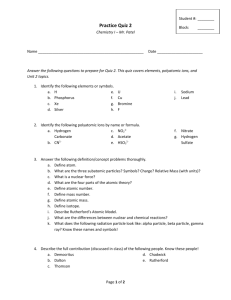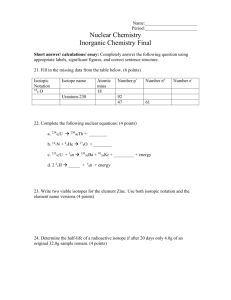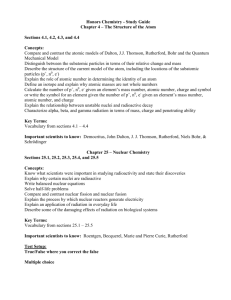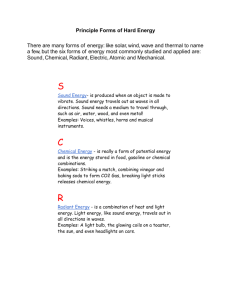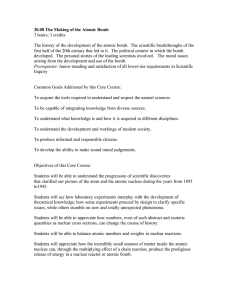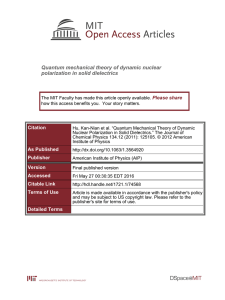Document 10343800
advertisement
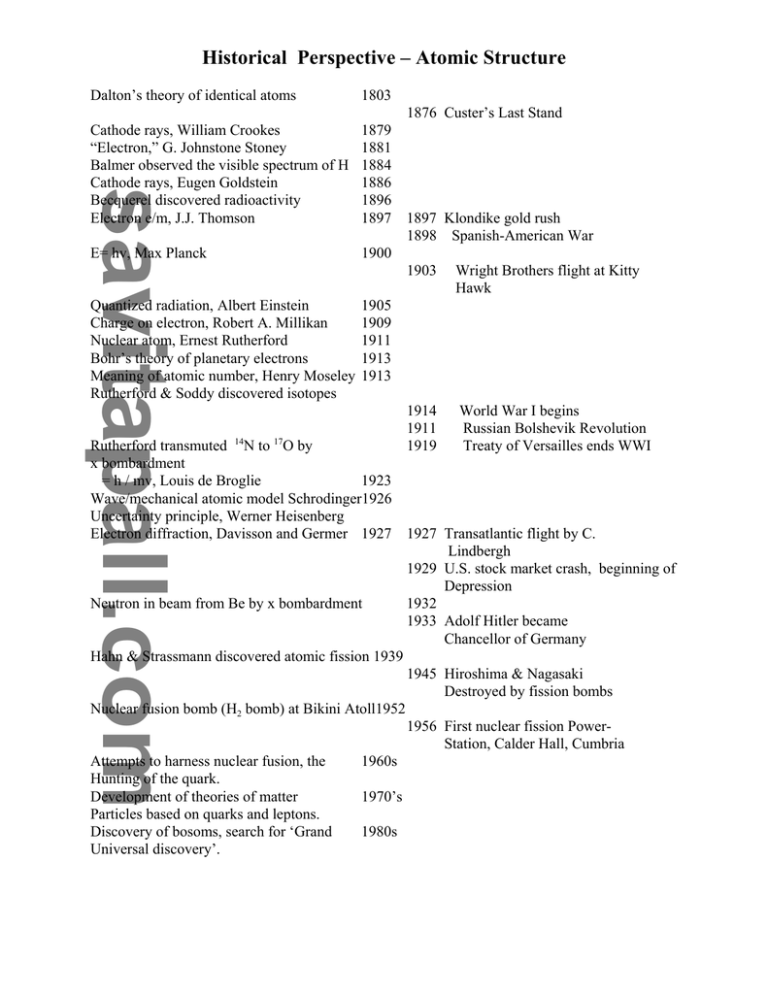
Historical Perspective – Atomic Structure Dalton’s theory of identical atoms 1803 1876 Custer’s Last Stand 1879 1881 1884 1886 1896 1897 1897 Klondike gold rush 1898 Spanish-American War E= hv, Max Planck 1900 1903 Wright Brothers flight at Kitty Hawk Quantized radiation, Albert Einstein 1905 Charge on electron, Robert A. Millikan 1909 Nuclear atom, Ernest Rutherford 1911 Bohr’s theory of planetary electrons 1913 Meaning of atomic number, Henry Moseley 1913 Rutherford & Soddy discovered isotopes 1914 World War I begins 1911 Russian Bolshevik Revolution Rutherford transmuted 14N to 17O by 1919 Treaty of Versailles ends WWI x bombardment = h / mv, Louis de Broglie 1923 Wave/mechanical atomic model Schrodinger1926 Uncertainty principle, Werner Heisenberg Electron diffraction, Davisson and Germer 1927 1927 Transatlantic flight by C. Lindbergh 1929 U.S. stock market crash, beginning of Depression Neutron in beam from Be by x bombardment 1932 1933 Adolf Hitler became Chancellor of Germany Hahn & Strassmann discovered atomic fission 1939 1945 Hiroshima & Nagasaki Destroyed by fission bombs Nuclear fusion bomb (H2 bomb) at Bikini Atoll1952 1956 First nuclear fission PowerStation, Calder Hall, Cumbria Attempts to harness nuclear fusion, the 1960s Hunting of the quark. Development of theories of matter 1970’s Particles based on quarks and leptons. Discovery of bosoms, search for ‘Grand 1980s Universal discovery’. Cathode rays, William Crookes “Electron,” G. Johnstone Stoney Balmer observed the visible spectrum of H Cathode rays, Eugen Goldstein Becquerel discovered radioactivity Electron e/m, J.J. Thomson
